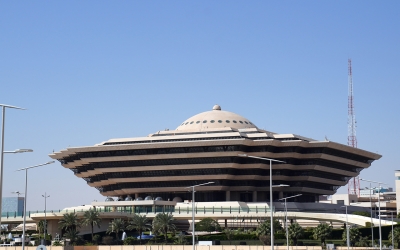


Ministry of Interior is the governing body responsible for the administration of regions and the maintenance of security and stability across the Kingdom of Saudi Arabia. Its responsibilities encompass combatting all forms of crime and ensuring the well-being of the citizens. The Ministry of Interior is one of the ministries under the executive authority.
Establishment of Ministry of Interior
During the reign of the founding King Abdulaziz bin Abdulrahman al-Saud in 1926, the Public Prosecution was established, which later became the nucleus of the Ministry of Interior. At its inception, the Department of Public Security, Public Health, Municipalities, Public Works, Commerce, Agriculture, Industries, Minerals, Telegraph, Post, and other private institutions were incorporated under its umbrella.
This arrangement continued until 1931 when the Agents Law was introduced. Under Article 20 of the Agents Law, the Public Prosecution's name was changed to the Ministry of Interior, with the Bureau of the Public Prosecutor and the Presidency of the Council of Agents as its new entities. The Public Prosecution was divided into two sections: the Ministry of the Interior and the Council of Agents.
In 1934, the Ministry merged with the Council of Agents, assuming the functions designated to the Ministry until its re-establishment in 1951. This period also witnessed the establishment of the Ministry of Health.
Ministry of Interior sectors
The Ministry of Interior is responsible for managing several key entities, including the General Directorate of Public Security, the General Directorate of Civil Defense, the General Directorate of Passports, the General Directorate of Border Guards, the Emirates of Regions, and the General Administration of International Police 'the Saudi Interpol'.
Ministry of Interior is affiliated with several sectors, including the General Directorate of Prisons, the General Directorate of Narcotics Control, the High Commission for Industrial Security, the Special Forces for Roads Security, the Facilities Security Forces, the General Department of Weapons and Explosives, the General Department of Medical Services, the General Department of Traffic, the General Administration of Mujahideen, the King Fahd Security College, and the National Information Center.
The Minister of Interior is appointed by a Royal Order and is a member of the Council of Ministers. He is the primary official responsible for the ministry.
Digital transformation in Ministry of Interior
In recent years, the Ministry of Interior has undergone a significant digital transformation in the Kingdom, aiming to enhance government performance. In 2010, the ministry introduced Absher platform, followed by Absher Business Platform in 2017, which collectively offer over two hundred online services.
Ministry of Interior building
The Ministry of Interior operates from its headquarters located in Riyadh. The building itself is an architectural marvel known as the inverted pyramid due to its unique design.
Construction on this iconic structure began in 1980, led by the architectural firm Archisystems and architects Mousalli, Shaker, and Mandili, who were entrusted with both the construction and design of the building. The headquarter was officially inaugurated in 1989. The building features a striking dome constructed from multiple pieces and incorporates special brass components.
the building stands approximately fifty-five m tall and includes ten upper floors along with three lower levels. It has earned nicknames like the "Spaceship" or the "Flying Saucer" due to its distinct appearance. The exterior cladding is made of natural stone and adorned with glass facades.
Related quizzes

